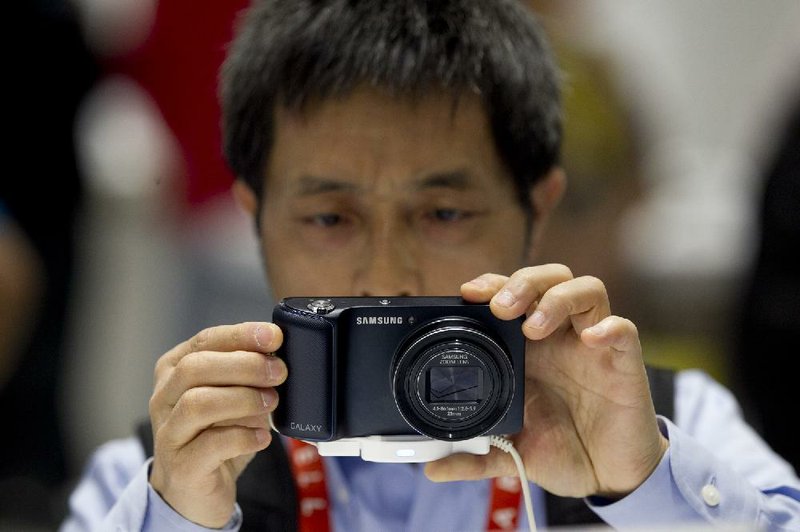LITTLE ROCK — Smart-phone owners often use their phones to take lots of pictures rather than pulling out a stand-alone digital camera.
Digital-camera sales are falling as consumers are taking a large and growing portion of their photos with their phones. For several years now, the most-popular camera among users of the photo-sharing website Flickr has been the iPhone.
With a smart phone, “I can do all my creativity on the same device that I took the picture with,” said Chris Chute, an analyst who covers the digital camera market for IDC, a technology research firm. “That’s a value proposition that’s very difficult to match.”
But Chute and other digital-imaging experts say that despite the advantages and popularity of smart phones, there remain compelling reasons to have a digital camera,including higher-quality images, particularly in low light. Digital cameras also offer powerful zoom features unavailable on smart phones. Some cameras feature rugged cases that withstand drops and water.
What’s more, camera makers are learning from the success of smart phones and adopting some of their features, such as the ability to connect to the Internet or run apps.
“Smart phones and cameras can clearly coexist,” said Liz Cutting, a senior imaging analyst at market research firm NPD Group. “They just have different places in consumers’ lives.”
Global smart-phone shipments rose 33 percent in 2012 to 654 million. Industry analysts said U.S. consumers took 36 percent of their photos with a smart phone last year, up from just 17 percent in 2010. At the same time, worldwide shipments of digital cameras fell 12 percent last year to 122 million. Compact digital cameras were used to take 34 percent of U.S. consumers’ photos, down from 46 percent in 2010.
One way cameras outperform smart phones is with their lenses. Even low-end point-and-shoot cameras offer five-times optical zoom lenses. More-expensive models offer up to 50-times optical zoom lenses. Zoom lenses are useful for taking shots from far away, such as during a child’s soccer game or a recital.
Consumers generally can’t get a zoom lens on a smart phone. While users can zoom in on an image in a smart phone, the image actually is focusing in on just a portion of what the image sensor is detecting. This typically leads to much fuzzier pictures than what can be shot with a true zoom lens.
Terry Sullivan, associate editor of digital imaging at Consumer Reports magazine, said he recently tested a Canon SX50 camera, which has a 50-times optical zoom lens. He used it to take a picture of the moon and was able to zoom in close enough to see the moon’s craters. That’s something he couldn’t do with a smart phone.
“It was really extraordinary,” Sullivan said.
Stand-alone cameras also have an advantage in their image sensors, which generally are larger than those found in smart phones. The larger sensors can collect more light, allowing the cameras to take better pictures at night and in dark rooms. The larger sensors also allow more space for their pixels, allowing them to shoot higher-resolution, less grainy images.
Another area in which some stand-alone cameras excel is in their ability to deal with water or harsh treatment. You can find an array of cameras these days priced between $100 and $400 that can go 30 or more feet underwater and survive drops of 5 feet or more. Smart phones can typically survive similar conditions only with special, sometimes pricy, cases.
Digital-camera makers are trying to make their products more appealing to customers not just by distinguishing them from smart phones, but by making them work better with smart phones or, in some cases, work more like them.
A growing number of cameras include Wi-Fi radios that allow users to upload pictures directly to Facebook or e-mail them to friends. They can also use those radios to transfer pictures to their smart phones and to use their smart phones as a remote control for their cameras when taking self-portraits.
Three cameras either on the market or soon to come include the Android operating system. Those cameras allow users to shoot and edit pictures with some of the same apps they’d use on their smart phones.
So while smart phones have become popular cameras, digital cameras are far from obsolete. Given their advantages over smart phones, “there’s a clear reason to continue buying a camera,” Cutting said.
Business, Pages 19 on 01/28/2013
